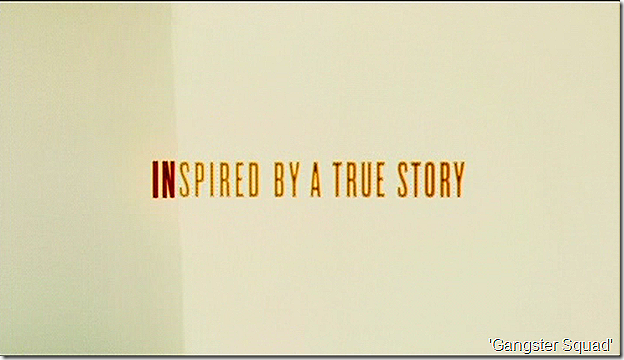
“Inspired by a True Story” is movie shorthand for “what you’re about to see is all b.s.”
Much against my better judgment, I forced myself to watch “Gangster Squad” again when it came out on DVD and “on demand.” Not that I expected it to improve. In fact, a second viewing (and I after the first 20 minutes I was fast-forwarding and pausing at the more egregious parts) merely highlights its many, many flaws.

Sean Penn channels James Cagney at the end of “White Heat” — for the entire movie
Cue the ominous music as Josh Brolin (Sgt. John O’Mara) intones:
Every man carries a badge (pause) some symbol of his allegiance. His were the scars of a boxer who used his fists to climb the social ladder of the mob. A Jew who gained the respect of wops through a homicidal lust. He’d sworn an oath to violence and his master, his own insatiable will to power. He wanted to own this town. His name is Mickey Cohen.
This, of course is going to come in handy at the end.
[Here is where I should say something about spoilers ahead, but really it’s impossible to spoil this movie. The filmmakers have already seen to that.]
O’Mara continues:
On my badge is the city of Los Angeles. I came back from the war and I didn’t even recognize it. Brothels … vice … blood in the streets … Cohen is building his empire.
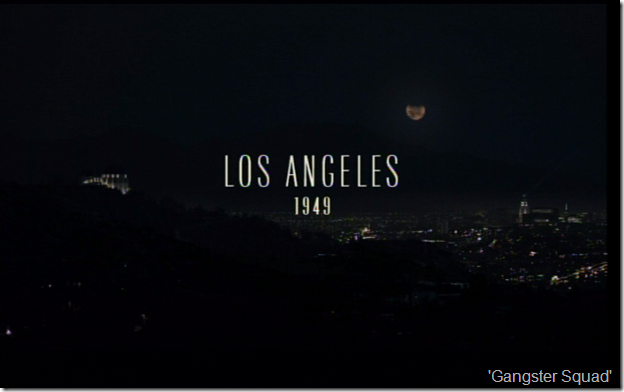
“Gangster Squad” is allegedly set in 1949. This will be important later.
For those of us who are sticklers for reality, the actual chief was Clemence B. “C.B.” Horrall. who retired in June 1949 and was replaced by retired Marine Maj. Gen. William A. Worton. William H. Parker didn’t become chief until August 1950.
How much do you want to bet it gets worse?
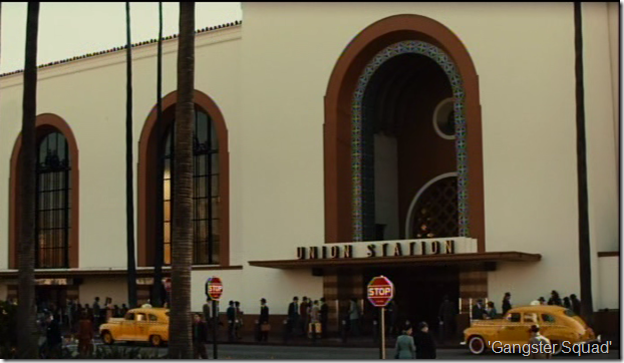
Union Station, exterior.
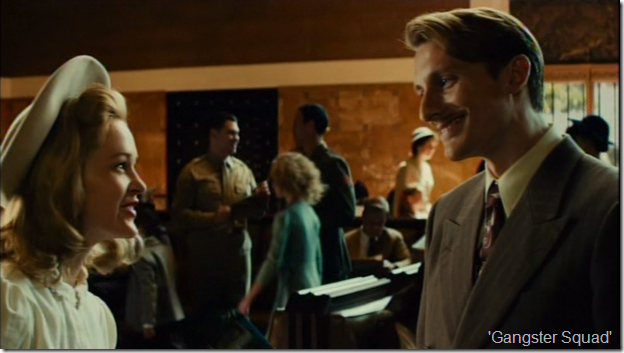
Union Station, interior.
The movie segues to a long sequence ending in a brawl in which O’Mara beats up a truckload of bad guys and saves a damsel in distress.
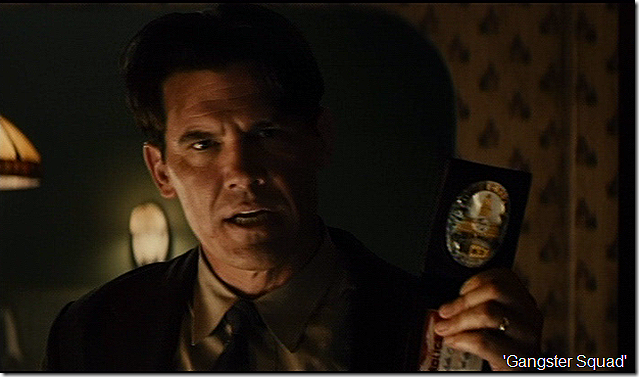
Josh Brolin does the old “badge bit” in “Gangster Squad.”
This whole sequence is immaterial to the plot, other than showing us what a tough guy O’Mara is. Except for one thing.
He apparently works homicide. And unless he’s investigating a killing, his presence is entirely unexplained.
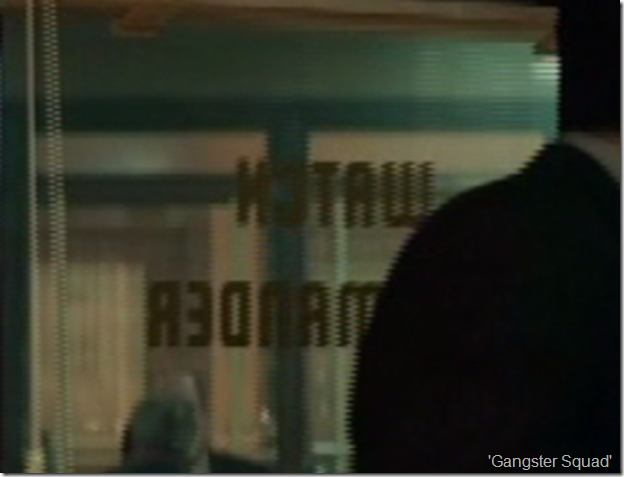
Check it out! The watch commander gets his own office!
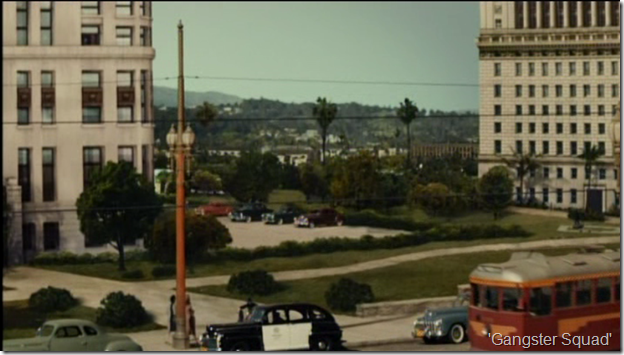
Who can tell me what’s wrong with this shot, allegedly taken from the front steps of City Hall?

I must be wrong. I have to be wrong. But I kept thinking the men in this film are wearing 1970s polyester shirts. And that tie? The cravat wrangler missed the boat on this one.
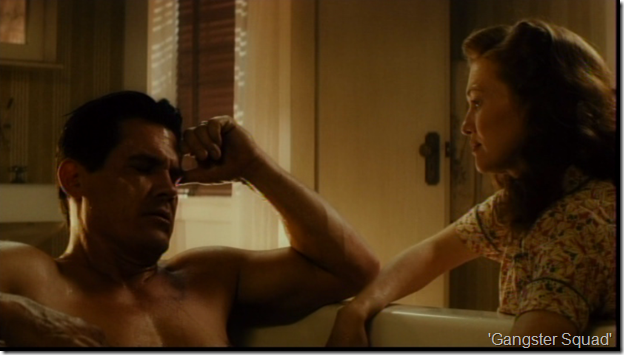
Where’s the camera in this scene? Either the O’Maras have a really, really big bathroom or (more likely) it’s a set and there’s no wall there.
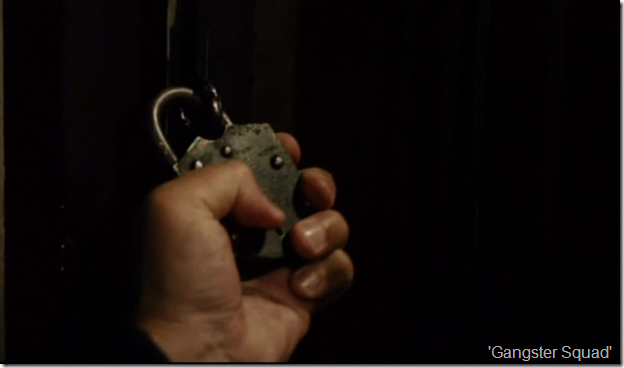
A bunch of bodies are found padlocked in the elevator of a burned-out building and nobody is going to ask any questions. Sure. That totally makes sense.
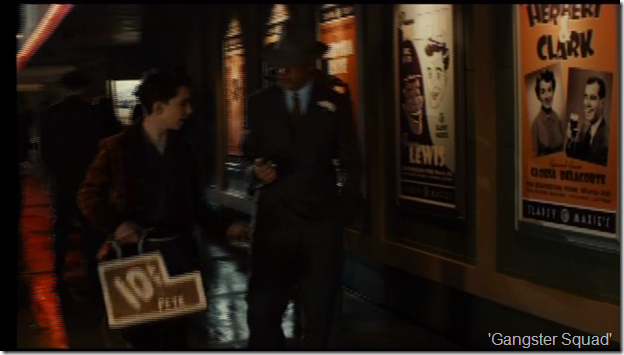
The exterior of Slapsy Maxie’s advertises Martha Raye, Martin and Lewis, Carmen Miranda, etc. But who are Herbert Clark and Gloria Delacorte? Correction: That is Herbert & Clark.
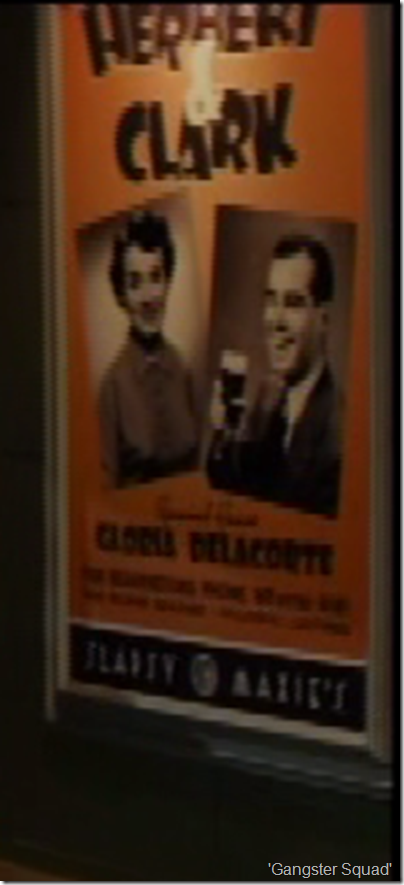
Herbert Clark? Gloria Delacorte? Correction: That is Herbert & Clark.
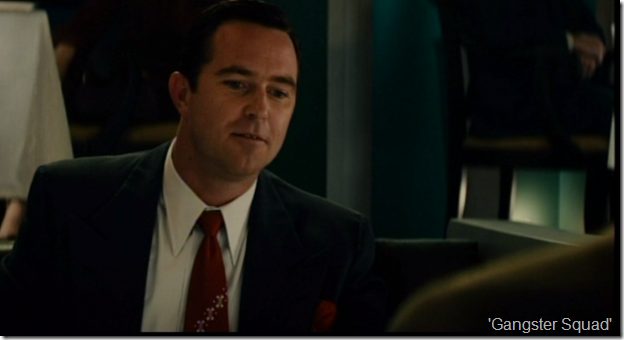
I’m still not crazy about that collar but at least the tie looks semi-authentic.
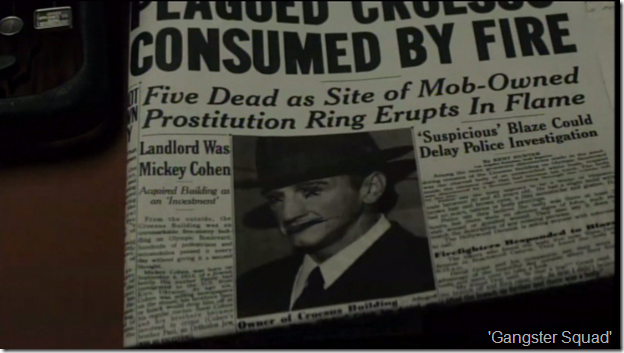
The Croesus Building? Sure, why not.
Historical note: Since William H. Parker wasn’t chief in 1949, future Chief Daryl Gates couldn’t have been his driver, right?
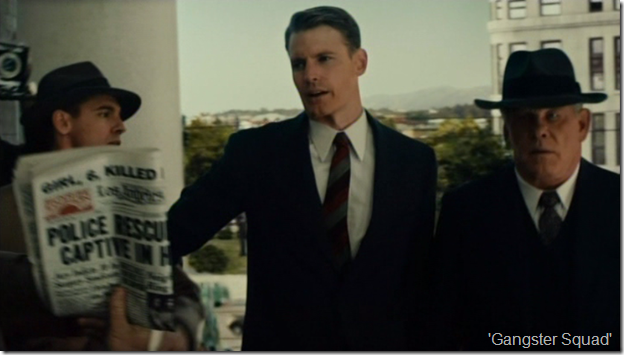
Daryl Gates and Chief Parker arrive at City Hall. Except Parker wasn’t chief in 1949 and Gates didn’t join the department until Sept. 16, 1949. In 1950, according to his autobiography, he was a traffic cop at 3rd Street and Broadway in downtown Los Angeles.
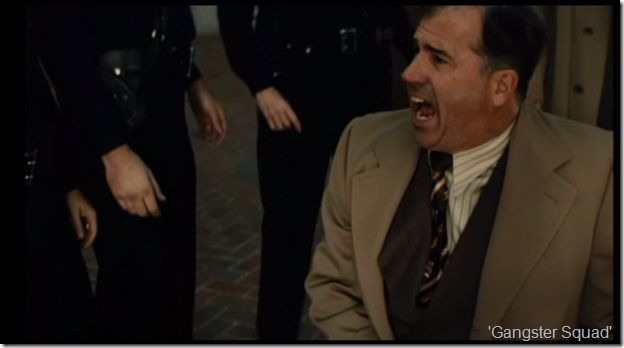
Pushing reporters to the ground is always great P.R. for the Police Department.
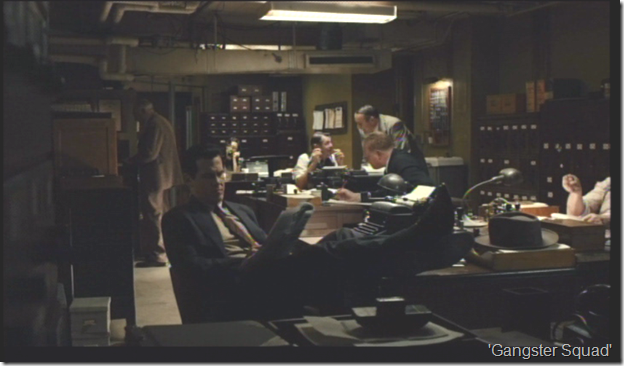
Of course, maybe the reason O’Mara is investigating an apparent vice case is because the Homicide Division is so slow. Apparently nobody was getting killed in 1949.
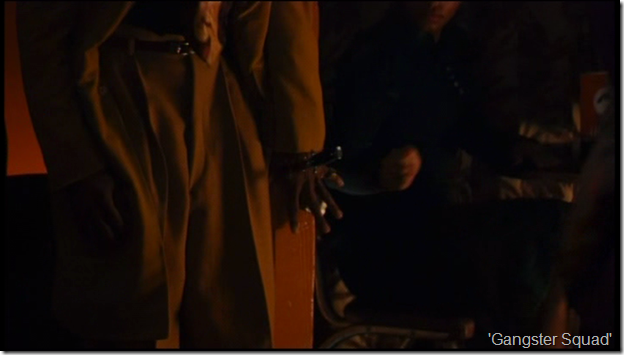
Officer Coleman Harris pins a guy’s hand to the wall by throwing a knife. And, best of all, he doesn’t even have to write it up. Heck, he doesn’t even want his knife back.
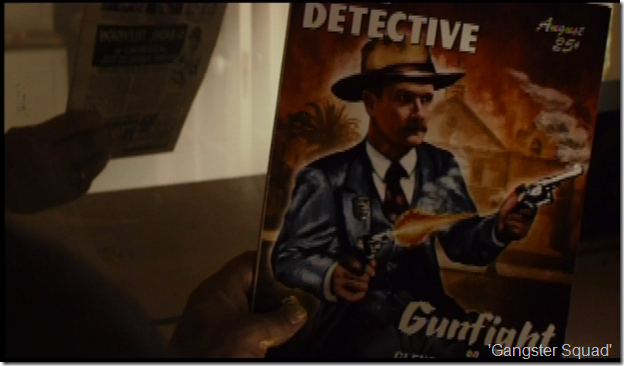
You cannot be serious. Yes, they are.
About here, I started fast-forwarding through the movie.
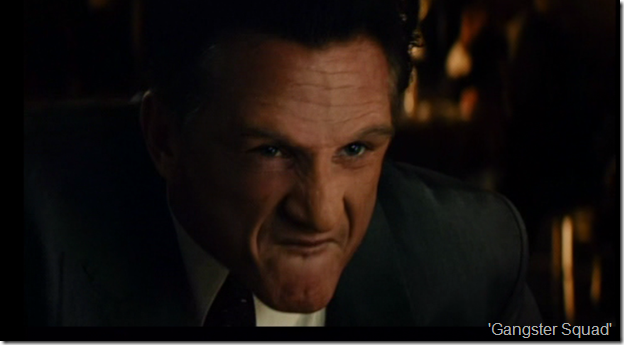
“Los Angeles is my destiny.” Yeah, sure.
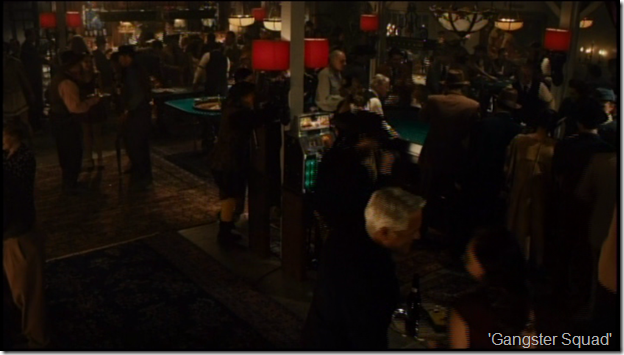
I know! Instead of targeting Mickey Cohen in Los Angeles, where we’re police officers, let’s go to the city of Burbank, where we have no jurisdiction. That will be totally awesome!
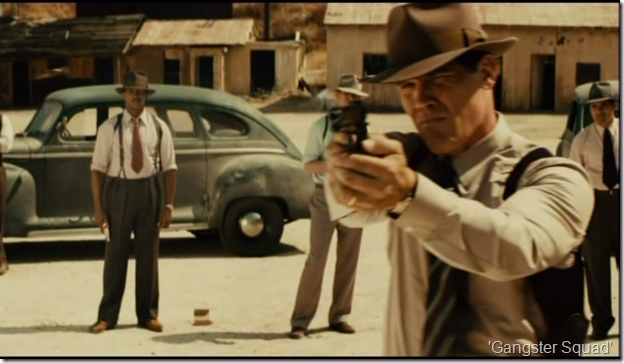
Shouldn’t you guys be practicing at the police range since you have to qualify regularly anyway? And nice hearing protection, there.
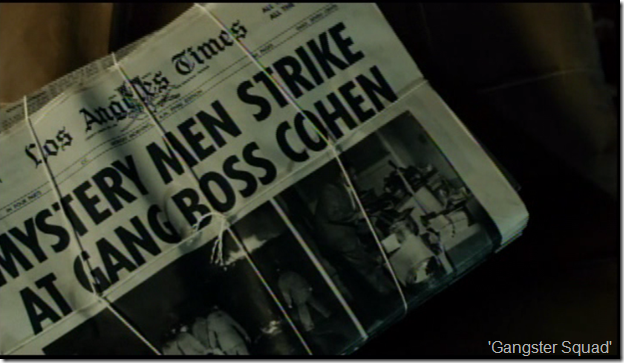
Proof that writing headlines is harder than it looks.
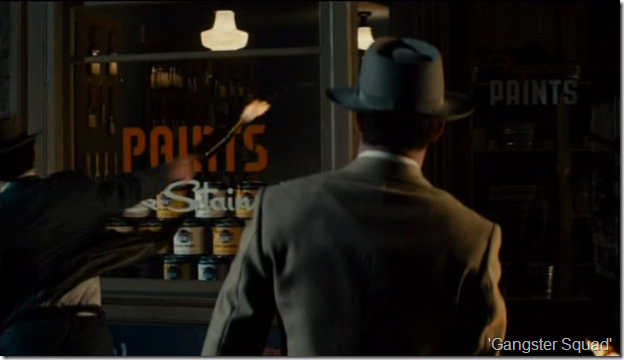
Well, we could shut it down legally. Naw, let’s just burn it instead. Sure. That totally makes sense. I’m so glad these guys are on the side of the law.
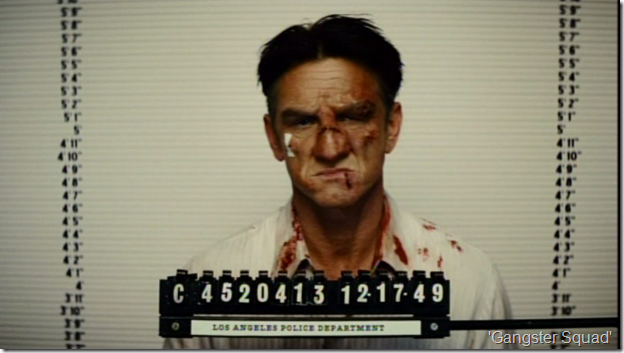
And why did Mickey Cohen go to Alcatraz, a federal prison, on a mythical homicide conviction in the state of California? That’s because he was convicted of federal income tax violation. Only in the bizarre logic of “Gangster Squad” does this make any sense whatsoever.
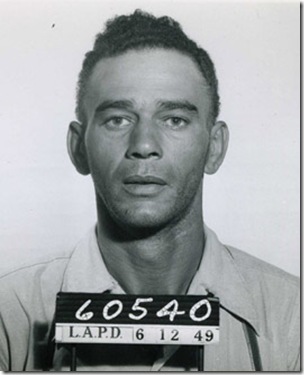
Update: And this is what an actual LAPD mug shot from 1949 looked like. In case you imagined “Gangster Squad” made even a feeble attempt to be accurate, the answer is no.
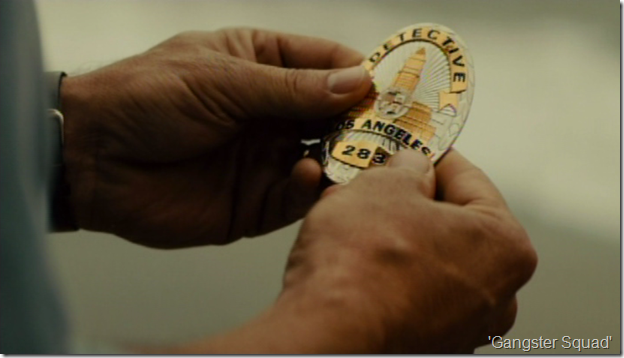
This badge means so much to Sgt. O’Mara that he….
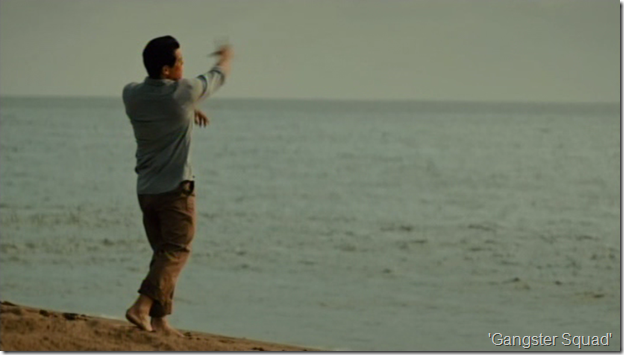
… throws it into the ocean. Sure, that totally makes sense. Oh well, it’s only a movie badge, anyway.


“Who can tell me what’s wrong with this shot, allegedly taken from the front steps of City Hall?” I can: everything. They’ve CGI’d in the old Hall of Records (left), which is adorable, but haven’t given it that famous “old Spring St” 45-degree jaunty angle. The area (center) between the HOR and the Hall of Justice (right) was full of structures — six low-slung buildings — offices and courtrooms. And the HOJ should be across Temple — where did Temple go? Moreover the view across the corner of Temple/Bway from here would be up at Fort Moore — we’d see perhaps a bit of the Board of Education building up on the hill peeking out from behind the HOJ but mostly in ’49 there was a lot of earth moving and demo for the Hollywood Freeway. Ah, missed opportunities!
LikeLike
Thanks, Crime Buddy ™!!
LikeLike
Just to be fussy, I believe the poster says “Herbert & Clark.” Not that it makes a difference in term of the authenticity. I’m pretty sure the pictures are period stock photos–I can’t think of any legitimate posters that would show a performer proffering a glass of beer that way.
LikeLike
Great post, Larry. I always get a thrill out of seeing intelligence-insulting horse-hockey exposed for what it is. Also, high kudos to Nathan for having such a sharp eye!
LikeLike
No DETECTIVE badges in 1949. In title they were Detective Sgt. or Detective Lt. but only Sergeant or Lieutenant was on the badge.
Why didn’t they pick actors that looked like the characters they portrayed.
LikeLike
Possible but unlikely that a two-handed grip on a pistol would have been used in 1949. My father was FBI-trained, and he always fired one-handed. Some LAPD historian should know when the drill changed.
LikeLike
For that matter, O’Mara (Brolin) is firing a semiautomatic instead of a revolver. I figure they didn’t make any attempt to be accurate because everybody ends up with Tommy guns anyway.
LikeLike
On the synthetic shirts– nylon “silk” shirts were all the rage in the late 40’s, since WWII mass-production techniques (used for making parachutes) brought the price down to Average Joe levels. My Dad still had a few in his closet from his college days.
LikeLike
Pingback: Black Dahlia: ‘I Am the Night’ – My Head Is Already Exploding |